What’s the finest tent materials to purchase?
The reply is straightforward…All of it comes all the way down to the sort of tenting journeys you’ll be happening.
Planning a backpacking journey? Weight might be on the high of your checklist of priorities.
Automotive tenting? You is likely to be extra involved about breathability and UV resistance.
Going tenting in tough terrain? You’ll need to ensure your tent is product of a extremely sturdy materials.
Widespread tenting tent supplies you’re more likely to come throughout in your search embody:
- Nylon
- Polyester
- Canvas
- Polycotton
- Cuben Fiber
However when you’re merely on the lookout for one of the best materials, Dyneema Composite Material (DCF) – previously referred to as Cuben Fiber is by far and away one of the best tent material that cash can purchase.
As soon as you realize the professionals and cons of every material, you need to have a greater thought of which one is finest for you, based mostly on your priorities.
What Is The Greatest Tent Materials?
There isn’t any one finest tent materials for tenting out in the marketplace. Each materials has its execs and cons which decide when it’s finest used.
Total, we agree that Dyneema Composite Material (DCF) – previously referred to as Cuben Fiber – is nice in a number of classes. It’s waterproof, mild in weight, and really robust.
And when you’re on the lookout for a tent with these particular traits, then this materials is one of the best.
Nonetheless, remember that the place DCF shines in these classes, there are some ways in which it lacks. For instance, it’s much less sturdy and dearer than different tent materials.
So, if these two classes are actually necessary to you, you need to take into account one of many two artificial supplies, nylon or polyester.
Each of those supplies come slightly near DCF in lots of classes, so that they’re each a very good choice for a tent.
Total, there’s definitely a tent material that’s simply best for you, and at this time, we’re going that can assist you by evaluating all the professionals and cons of every tent material.
Greatest Tent Materials By Operate
| Operate | Materials |
| Most Sturdy | Polycotton |
| Most Waterproof | DCF |
| Lightest | DCF |
| Most Eco-Pleasant | Canvas (natural cotton) |
| Most cost-effective | Polyester |
| Most Costly | DCF |
| Strongest | DCF |
Sturdiness & Longevity
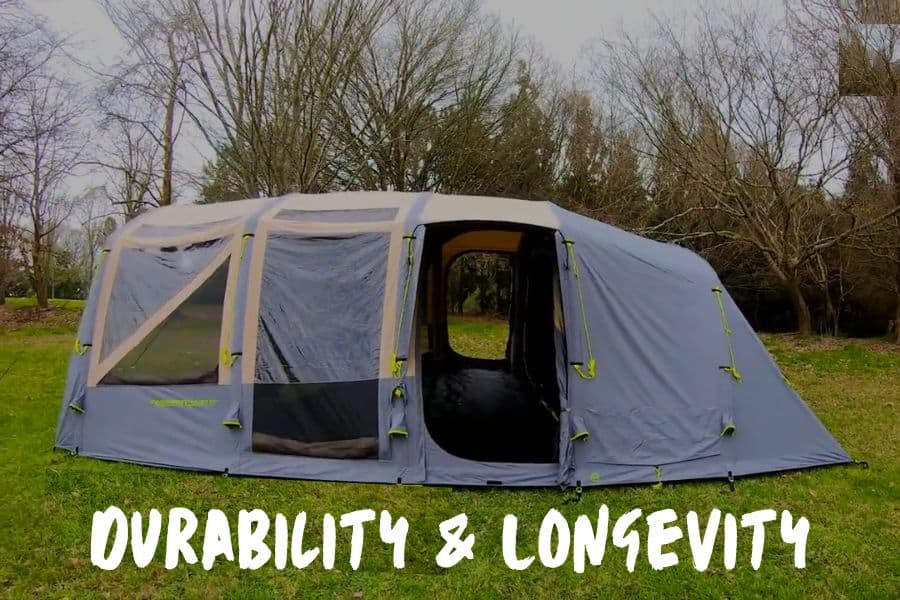
In terms of sturdiness, polycotton wins. It combines one of the best traits of each polyester and cotton.
Cotton fibers are already very robust, and they’re additional fortified with polyester fibers to forestall ripping or tearing.
Moreover, polycotton has nice UV resistance. This material will fade and degrade at a a lot slower tempo than polyester or cotton would on their very own.
Waterproofing
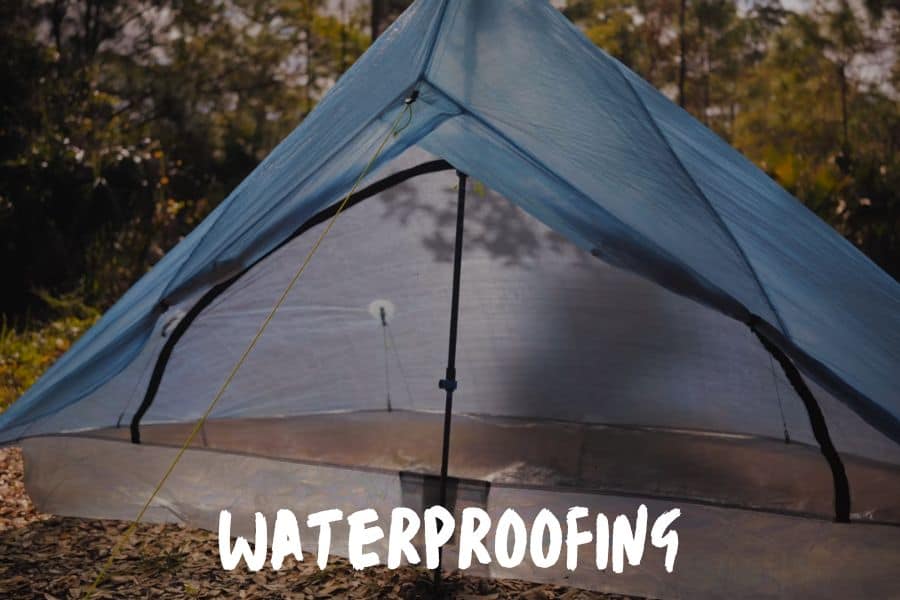
As for the waterproofness, it’s clear which materials wins on this class: Dyneema Composite Material (DCF).
Not like every other materials we talked about, DCF doesn’t take in water – not even the tiniest bit.
As a substitute, the water drops merely glide off the material onto the bottom. For that cause, it doesn’t want any further coating, not like different supplies.
Additionally learn: How To Waterproof A Canvas Tent
Price & Affordability

Amongst all of the tent materials, polyester is essentially the most inexpensive choice.
Polyester manufacturing is extraordinarily cheap because it solely includes petroleum, coal, water, and air.
In comparison with nylon, one other artificial materials, the polyester manufacturing price is nearly halved.
Additionally learn: Prime 9 Greatest Tents Beneath $100 (2023 Purchaser’s Information)
3-Season Vs. 4-Season
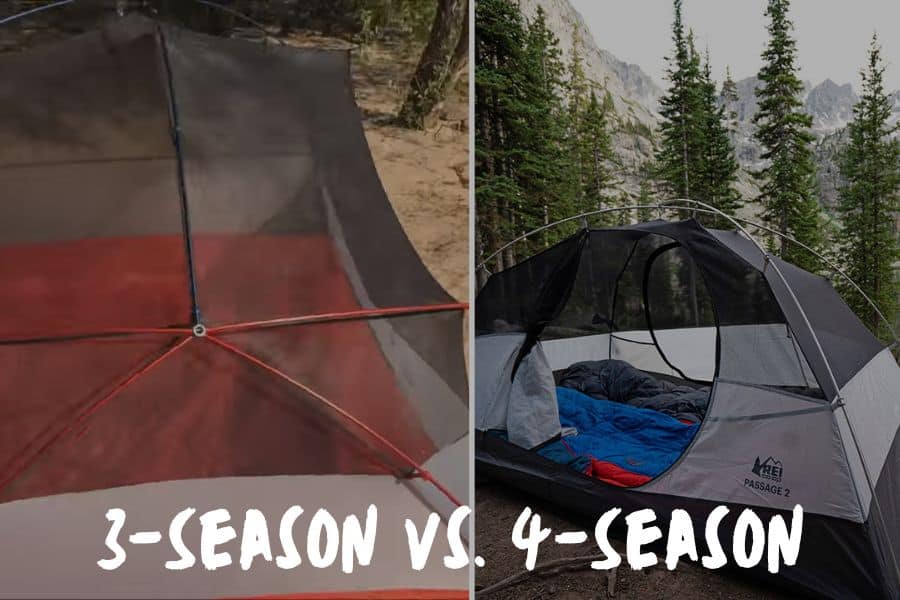
Whereas 3-season tents work with a wide range of supplies, the best choice for a 4-season tent is ripstop nylon.
Nylon traps warmth higher in comparison with different materials, which is a characteristic you completely need in a winter tent.
Nonetheless, common nylon would sag and stretch from snow and winds, which is why ripstop nylon works higher right here.
Light-weight Supplies
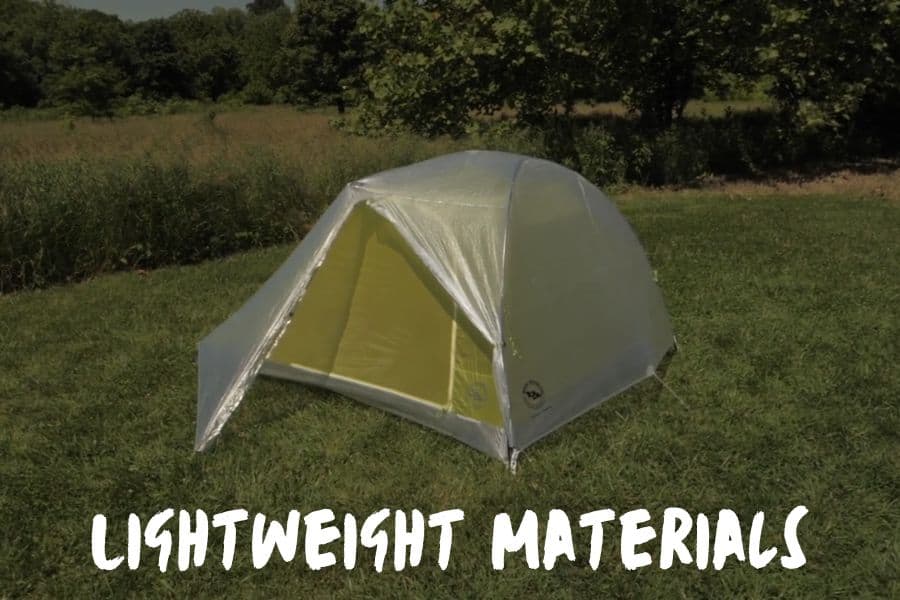
In terms of materials weight, Dyneema Composite Material holds a well-deserved first place.
Till the invention of this material, nylon was the fabric reserved for backpacking tents.
Nonetheless, since DCF weighs as much as 30% lower than nylon, it grew to become the material of selection for ultralight tents.
Plus, because it doesn’t take in water in any respect, not like every other materials, it doesn’t acquire weight when sagged.
However don’t be fooled by the featherweight of DFC, as this materials is extremely robust for its weight.
With that being stated, let’s not overlook concerning the drawbacks that include this material. These are weak to tears and abrasions, are greater in price, and are massive when packed.
Environmental Influence
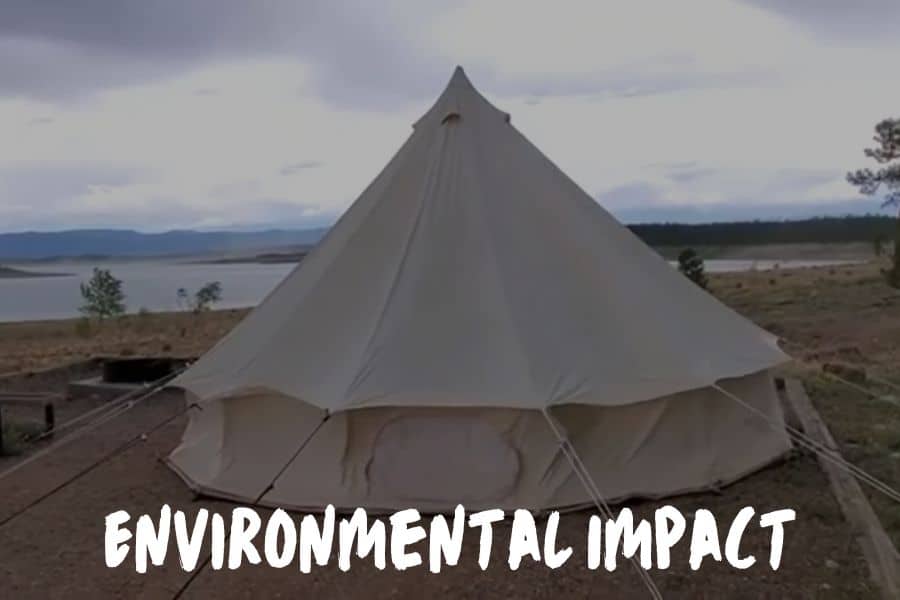
Discovering the winner on this class isn’t as easy as it might appear.
Although it’s product of pure fibers, cotton isn’t a really environmentally pleasant material. First, it requires loads of water to develop – 5,300 gallons for mere 2 lbs of cotton!
What’s extra, many of the cotton grown globally isn’t natural, which implies it includes genetically modified seeds and chemical compounds.
We should additionally take into accounts that cotton received’t final wherever close to so long as artificial supplies, like polyester or nylon.
So, it makes extra waste in the identical period of time. Plus, making artificial supplies requires approach much less water.
Nonetheless, artificial supplies:
- Are derived from fossil fuels.
- Require chemical compounds in manufacturing.
- Aren’t biodegradable.
So, what’s the fabric with the least environmental impression, then?
Properly, that will be natural cotton. Producing natural cotton addresses most eco-challenges common cotton manufacturing faces.
Not solely does it keep away from utilizing chemical compounds, however it additionally includes ancestral farming strategies that protect soil.
Natural cotton tents aren’t as frequent as their non-organic counterparts. However, they’re undoubtedly a sensible choice when you’re involved concerning the environmental impression of your tent.
A Fast Comparability Of Tent Materials
| Materials | Execs | Cons |
| Nylon | very light-weight, sturdy, quick-drying | restricted water resistance, stretches over time, unhealthy UV resistance |
| Ripstop Nylon | very breathable, quick-drying, light-weight, tear-resistant | heavier than nylon, restricted water resistance |
| Polyester | inexpensive, sturdy, UV-resistant, stretch-resistant | heavy, inclined to ripping |
| Ripstop Polyester | extremely tear-resistant, sturdy, quick-drying | heavy |
| Canvas | very breathable, UV-resistant, well-insulated, water resistant | very heavy, slow-drying, costly, vulnerable to mildew |
| Polycotton | breathable, extremely sturdy, mildew-resistant | heavy, costly |
| DCF | extremely waterproof, stretch-resistant, patchable, extraordinarily light-weight | Costly, low sturdiness |
FAQs
What Is The Greatest Waterproof Tent Materials?
Not like different supplies, DCF is totally waterproof and lets water slide off the material, as a substitute of absorbing it.
What Is The Strongest Tent Materials?
DCF has the strongest fibers of all of the tent supplies. The truth is, it’s thought of to be one of many strongest fibers on the earth, at 15x the power of metal per weight.
Do UV Rays Have an effect on Tent Material?
In fact, solar rays degrade tent material like every other materials.
Nonetheless, not all materials degrade on the identical tempo. As an example, nylon has a a lot decrease UV resistance than polyester.
What Is Ripstop Tent Material & Is It Good?
Ripstop material has a crosshatch weave sample, which will increase its resistance to ripping and ripping.
Mainly, it has a stronger thread woven right into a grid sample to forestall holes from getting larger.
What Is Dyneema Tent Material & Is It Good?
Not like different supplies, Dyneema isn’t woven. It’s sandwiched between outer layers of polyester movie that’s then melded collectively in a high-pressure autoclave.
This materials has nice power, waterproofness and low weight.
What Is The Lightest Weight Tent Material?
Dyneema is the lightest tent material in the marketplace. In comparison with nylon, one other mild materials, Dyneema can weigh half of nylon’s weight.
What Is The Strongest Tent Material?
Amongst tent materials, DCF has one of the best strength-to-weight ratio.
Are There Any Distinctive Security Issues Related With Particular Tent Supplies?
Remember that not all tent materials have the identical properties. As an example, canvas could also be extra waterproof than another artificial supplies, however it requires seasoning.
Likewise, Dyneema stands out as the strongest material, however it’s not as sturdy as different ones.
The Remaining Verdict
Which material is one of the best? Properly, as you may see, there isn’t one proper reply. All of it depends upon what your high priorities are.
When you’re a backpacker on the lookout for a light-weight tent that received’t weigh you down, nylon is the best way to go.
Excessive adventurers tenting in tough terrain would most likely be higher off going for polyester.
Automotive campers can go for something actually, together with canvas tents, which is a wonderful selection when you don’t thoughts the additional weight.
And naturally Dyneema Composite Material (DCF) is one of the best of all of them!
Hopefully, you’ve now obtained a clearer image of one of the best tent materials for you. Glad tenting!
Extra on Tents:
